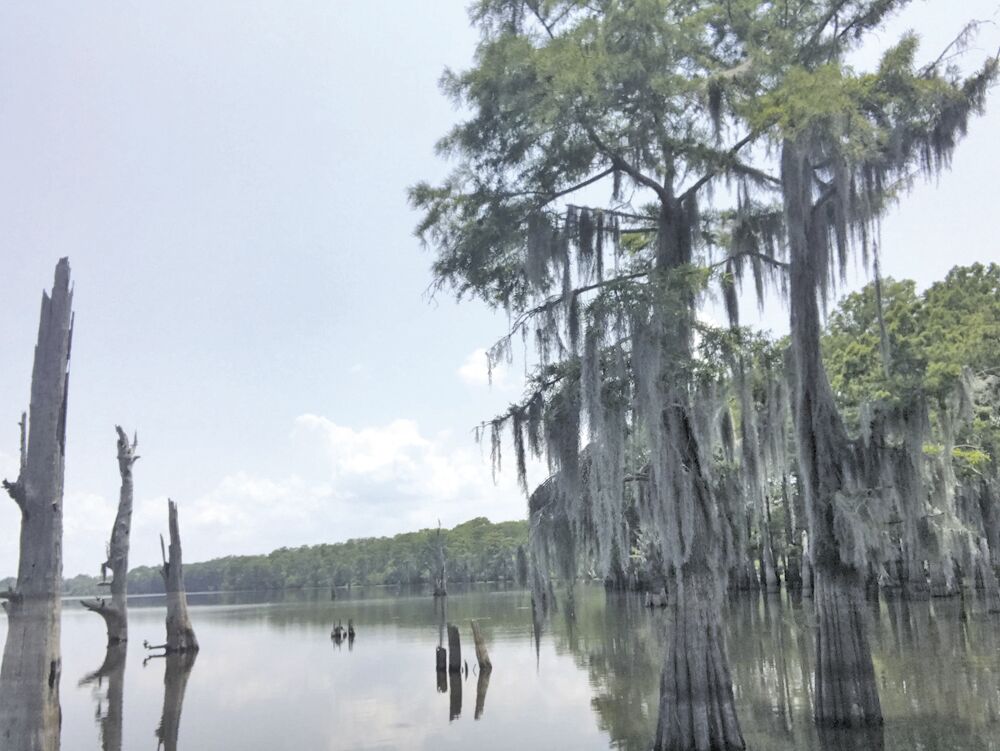OVERTIME OUTDOORS: Meeting informs, gives outdoorsmen better look at what’s happening in Basin
Published 12:00 am Wednesday, July 31, 2024

- The Atchafalaya Basin, shown in this photo in June 2023, is changing every year and not for the better, outdoorsmen pointed out recently at a public meeting at the Louisiana Department of Wildlife and Fisheries office in Baton Rouge. Siltation and deteriorating water quality concern recreational and commercial fishermen alike.
People who care about the Atchafalaya Basin and what’s happening between the levees expressed their concern by showing up at a public meeting recently in Baton Rouge.
Nearly 200 outdoorsmen attended the Louisiana Department of Wildlife and Fisheries forum July 23 directed by District 9 manager Brac Salyers, a veteran fisheries biologist. The Joe Herring Room inside the LDWF building at 2000 Quail Drive was packed to the point LDWF officials admittedly were impressed, pleasantly surprised.
LDWF secretary Madison Sheahan set the wheels in motion for the meeting following a chance conversation earlier this year with fisherman Toby Poirrier, according to a story by Joe Macaluso posted online Jan. 29 by The Advocate.
Poirrier said the issue is about more than the fish, the bass, sac-a-lait and bream that recreational fishermen love to catch in the Atchafalaya Basin, the nation’s last great overflow swamp, also known as the Spillway.
“It’s the overall health of the Atchafalaya Basin. The middle of the Basin is stagnant, and if we can make the Basin a healthy environment again, then everybody would be rewarded, the guys who catch shad, the crawfishermen, and those of us who love to catch bass, sac-a-lait and bream. Everybody would be happier,” Poirrier said in the story.
Who knows the Atchafalaya Basin better than the men and women who sample its fishery, its breathtaking beauty, regularly when the overflow swamp dewaters every year and falls between the banks. That’s why I encouraged Acadiana’s outdoorsmen who care about the Atchafalaya Basin to attend the meeting in an Overtime Outdoors column published July 17.
I wrote that it’s time to go on record about what we’re seeing out there this year after the Atchafalaya River stage at Butte La Rose dropped from the 14s to the 6s in less than two weeks in late June and early July. That it is high time to talk about the deteriorating water quality, the siltation, the invasive plants covering inland waterbodies and an apparent decline in our favorite gamefish numbers.
Those and other topics were covered by those who spoke at the meeting. But, first, Salyers showed the crowd a series of slides and data proving clear decreases in the bass population between the East and West Atchafalaya Basin Protection Levees. It was a foregone conclusion that similar dropoffs would be found in sac-a-lait and bream numbers.
The Atchafalaya Basin’s current trials and travails all point to the U.S. Army Corps of Engineers, Macaluso wrote in Sunday’s story. I wholeheartedly agree.
It’s plain to see out there. The Corps dredges the river and other channels, then deposits the mud on higher spoil banks, thus preventing the “overflow” part of the overflow swamp during the rise each late winter/spring.
Dredging releases silt-laden waters that settle in areas that build up to discourage access by recreational and commercial fishermen. Many such areas are dying and unable to support fish life because of poor water quality.
My first outdoors column in The Daily Iberian in 1976 was meant to sound the alarm about siltation and what it was doing to the Atchafalaya Basin. I thought it was horrible then, 48 years ago, and, yes, my finger pointed at the Corps.
Sadly, it’s much, much worse, and it dismays me every time I ride out there.
The recent meeting outlined the obvious problems – siltation and dredging. It was a start and, hopefully, the public will continue to have an input.
There are remedies. The Corps recently agreed to dredge parts of Bayou Pigeon, where siltation limits boating traffic in the heart of the Spillway.
If you are passionate about the health of the Atchafalaya Basin, stay tuned and try to attend (or have your voice heard at) a second public meeting in the future scheduled for Lafayette, according to Salyers. The time and place will be announced.
We also need to contact our elected officials, our state senators and state representatives, to keep them abreast of the situation before it’s too late. Some people might argue we’re past that point.
We’ve got the attention of the stewards of the Atchafalaya Basin, the LDWF. The state agency is charged with managing and protecting Louisiana’s abundant resources and our most prized resource in Acadiana is the once-great Atchafalaya Basin. Let’s make sure the state officials do just that.
DON SHOOPMAN is outdoors editor of The Daily Iberian.





